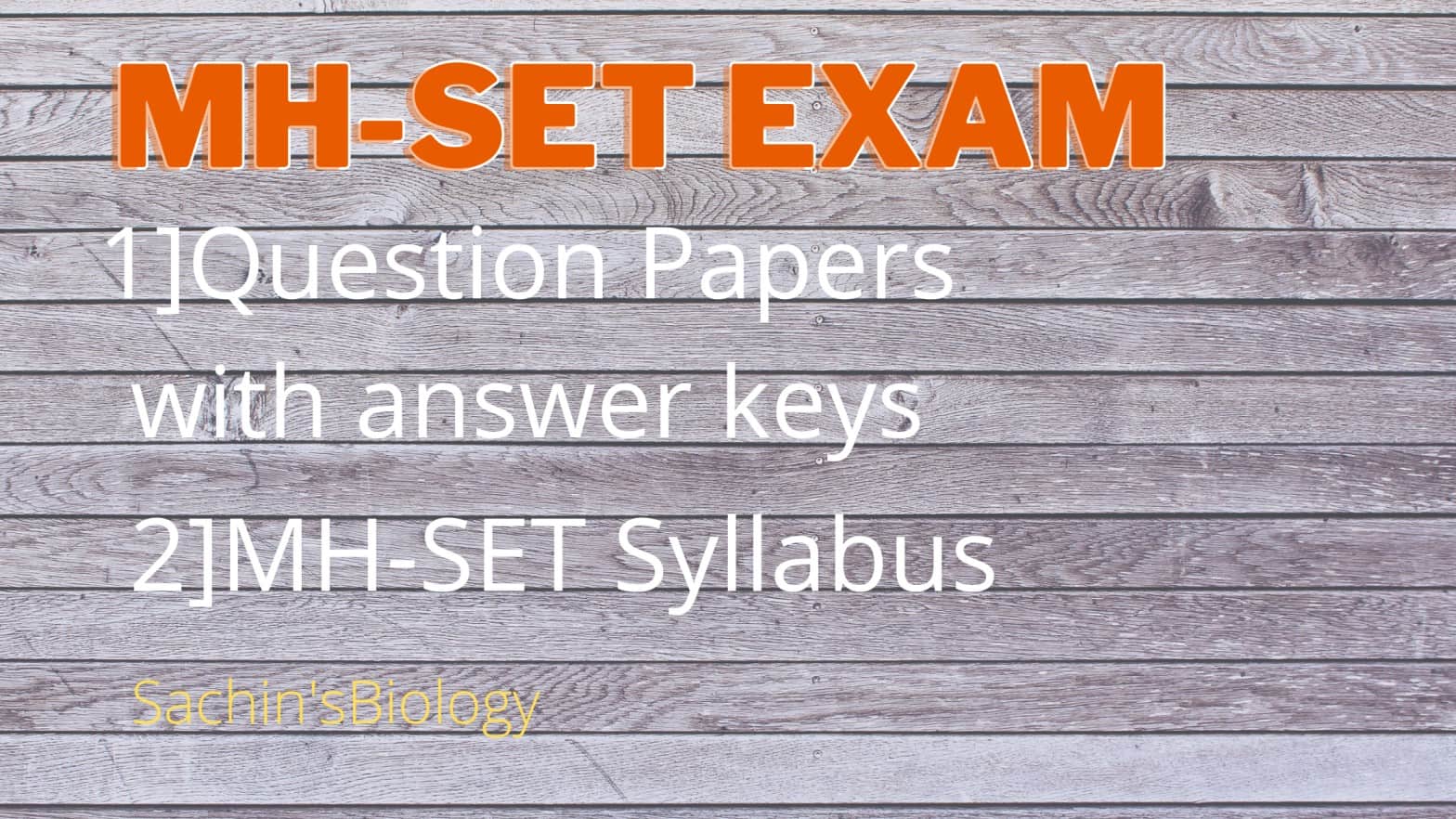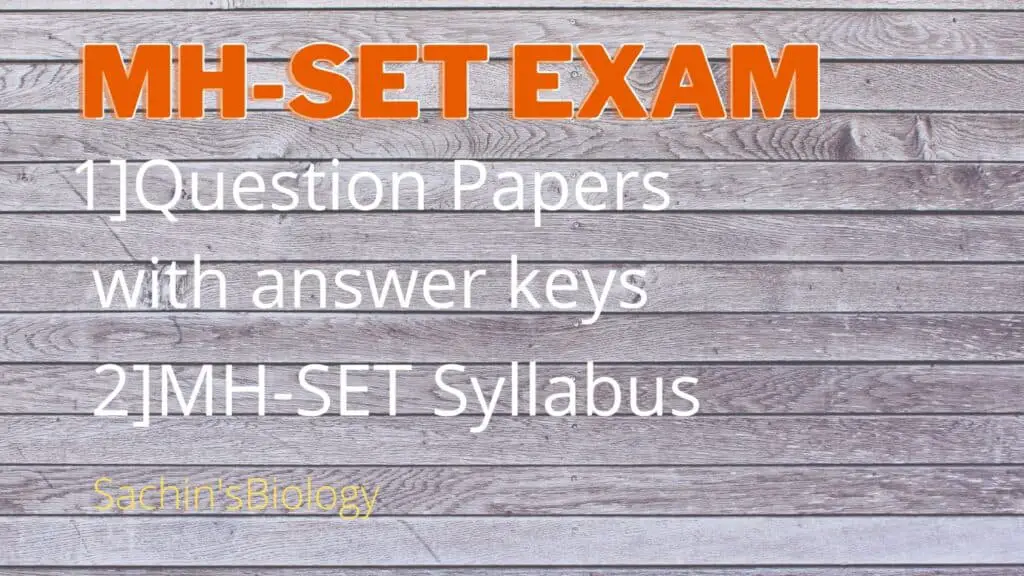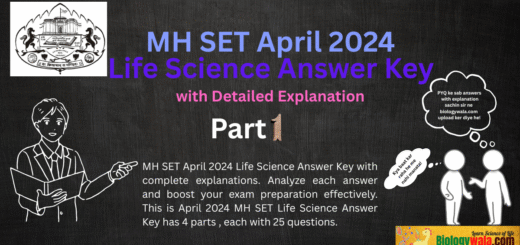MH-SET Question Papers last 7 years and Answer Keys:

MH-SET Question Papers and Answer Keys:

In this post, you can download MH-SET Question Papers and Answer Keys from the last 7 years and the MH-SET Syllabus of both papers 1st and 2nd.
Things to know before Downloading the MH-SET Question Papers with answer keys:
- All the question papers belong to set A.
- All the answer keys are papers 2 and 3 contain the answer keys of all the subjects when you will open the answer key and search for the word Life science you will get your required key of set A.
Download the MH-SET Question Papers last 7 years and Answer Keys:
| YEARS | MH-SET Question Papers | MH-SET Answer keys |
| 2021 | Paper 1 Paper 2 | Paper 1 Paper 2 |
| 2020 | Paper 1 Paper 2 | Paper 1 Paper 2 |
| 2019 | PAPER 1 PAPER 2 | PAPER 1 PAPER 2 |
| 2018 | PAPER 1 PAPER 2 PAPER 3 | PAPER 1 PAPER 2 PAPER 3 |
| 2017 | PAPER 1 PAPER 2 PAPER 3 | PAPER 1 PAPER 2 PAPER 3 |
| 2016 | PAPER 1 PAPER 2 PAPER 3 | PAPER 1 PAPER 2 PAPER 3 |
| 2015 | PAPER 1 PAPER 2 PAPER 3 | NOT AVAILABLE NOT AVAILABLE NOT AVAILABLE |
Next: MH SET April 2024 Life Science Answer Key with Detailed Explanation
- MH SET April 2024 Life Science Answer Key with Detailed Explanation: Part 1
- MH SET April 2024 Life Science Answer Key with Detailed Explanation: Part 2
- MH SET April 2024 Life Science Answer Key with Detailed Explanation: Part 3
- MH SET April 2024 Life Science Answer Key with Detailed Explanation: Part 4
Download MH-SET PAPER 1 BOOK
Download the MH-SET Syllabus :
MH-SET Syllabus Paper 2: Life Sciences
( Remember from 2019 onwards papers 2 and 3 have merged as only Paper 2.)
MH-SET Syllabus Paper 1: General Paper on Teaching and Research Aptitude.
PAPER-I
The main objective of MH-SET Question Paper 1:
To assess the teaching and research capabilities of the
candidates. The test aims at assessing teaching and research aptitude as well. Candidates are expected to possess and exhibit cognitive abilities, which include:
- Comprehension analysis, evaluation.
- Understanding the structure of arguments,
- Deductive and inductive reasoning.
- The candidates are also expected to have a general awareness of teaching.
- Learning processes in the higher education system.
- Further, they should be aware of the interaction between people, the environment, natural resources
- Their impact on the quality of life.
The details of the syllabi are as follows:
Unit-I Teaching Aptitude:
- Teaching: Concept, Objectives, Levels of teaching (Memory,Understanding and Reflective), Characteristics and basic requirements.
- Learner’s characteristics: Characteristics of adolescent and adult learners(Academic, Social, Emotional and Cognitive), Individual differences.
- Factors affecting teaching related to Teacher, Learner, Support material,Instructional facilities, Learning environment and Institution.
- Methods of teaching in Institutions of higher learning: Teacher-centred vs.Learner-centred methods; Off-line vs. Online methods (Swayam,Swayamprabha, MOOCs etc.).
- Teaching Support System: Traditional, Modern and ICT based.
- Evaluation Systems: Elements and Types of evaluation, Evaluation inChoice Based Credit System in Higher education, Computer-basedtesting, Innovations in evaluation systems.
Unit-II Research Aptitude:
- Research: Meaning, Types, and Characteristics, Positivism and Post positivistic approach to research.
- Methods of Research: Experimental, Descriptive, Historical, Qualitative and Quantitative methods.
- Steps of Research.
- Thesis and Article writing: Format and styles of referencing.
- Application of ICT in research.
- Research ethics.
Unit-III Comprehension:
- A passage of text is given. Questions are asked from the passage to be answered.
Unit-IV Communication:
- Communication: Meaning, types and characteristics of communication.
- Effective communication: Verbal and Non-verbal, Inter-Cultural and group communications, Classroom communication.
- Barriers to effective communication.
- Mass-Media and Society.
Unit-V Mathematical Reasoning and Aptitude:
- Types of reasoning.
- Number series, Letter series, Codes and Relationships.
- Mathematical Aptitude (Fraction, Time & Distance, Ratio, Proportion and Percentage, Profit and Loss, Interest and Discounting, Averages etc.).
Unit-VI Logical Reasoning:
- Understanding the structure of arguments: argument forms, structure of categorical propositions, Mood and Figure, Formal and Informal fallacies,
- Uses of language, Connotations and denotations of terms, Classical square of opposition.
- Evaluating and distinguishing deductive and inductive reasoning.
- Analogies.
- Venn diagram: Simple and multiple uses for establishing the validity of arguments.
- Indian Logic: Means of knowledge.
- Pramanas: Pratyaksha (Perception), Anumana (Inference), Upamana (Comparison), Shabda (Verbal testimony), Arthapatti (Implication) andmAnupalabddhi (Non-apprehension).
- Structure and kinds of Anumana (inference), Vyapti (invariable relation), Hetvabhasas (fallacies of inference).
Unit-VII Data Interpretation:
- Sources, acquisition and classification of Data.
- Quantitative and Qualitative Data.
- Graphical representation (Bar-chart, Histograms, Pie-chart, Table-chart and Line-chart) and mapping of Data.
- Data Interpretation.
- Data and Governance.
Unit-VIII Information and Communication Technology (ICT):
- ICT: General abbreviations and terminology.
- Basics of the Internet, Intranet, E-mail, Audio and Video-conferencing.
- Digital initiatives in higher education.
- ICT and Governance.
Unit-IX People, Development and Environment:
- Development and environment: Millennium development and Sustainable development goals.
- Human and environment interaction: Anthropogenic activities and their impacts on the environment.
- Environmental issues: Local, Regional and Global; Air pollution, Water pollution, Soil pollution, Noise pollution, Waste (solid, liquid, biomedical, hazardous, electronic), Climate change and its Socio-Economic and Political dimensions.
- Impacts of pollutants on human health.
- Natural and energy resources: Solar, Wind, Soil, Hydro, Geothermal,
- Biomass, Nuclear and Forests.
- Natural hazards and disasters: Mitigation strategies.
- Environmental Protection Act (1986), National Action Plan on Climate
- Change, International agreements/efforts -Montreal Protocol, Rio Summit,
- Convention on Biodiversity, Kyoto Protocol, Paris Agreement, International
- Solar Alliance.
Unit-X Higher Education System:
- Institutions of higher learning and education in ancient India.Evolution of higher learning and research in Post Independence India.
- Oriental, Conventional and Non-conventional learning programmes in India.
- Professional, Technical and Skill Based education.
- Value education and environmental education.
- Policies, Governance, and Administration.
NOTE: (i) Five questions each carrying 2 marks are to be set from each Module.
(ii) Whenever graphical/pictorial question(s) are set for sighted candidates, a passage followed by equal number of questions and weightage be set for visually impaired candidates.
After Downloading SET Question Papers with Answer Keys if you want to attempt some more Life Science test series ??? Then try this :
Cell Biology Test 1
Ecology Test 1
Biochemistry Test 1
Plant Physiology Test 1
Molecular Biology Test 1
Developmental biology Test 1
Join SACHIN’S BIOLOGY on Instagram or Facebook to receive timely updates and important notes about exams directly on your mobile device. Connect with Mr. Sachin Chavan, the founder of Sachin’s Biology and author of biologywala.com, who holds an M.Sc., NET JRF (AIR 21), and GATE qualifications. With SACHIN’S BIOLOGY, you can have a direct conversation with a knowledgeable and experienced professional in the field of biology. Don’t miss out on this opportunity to enhance your exam preparation!


